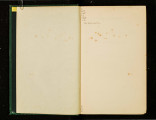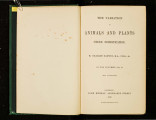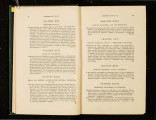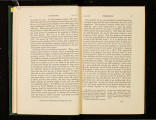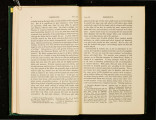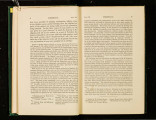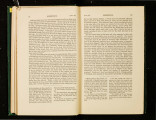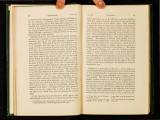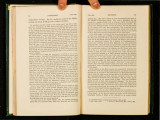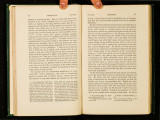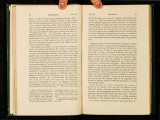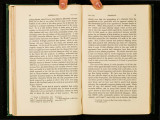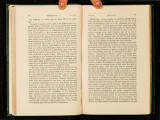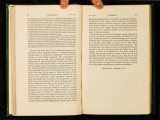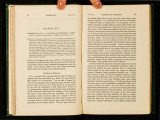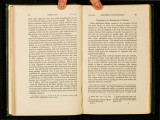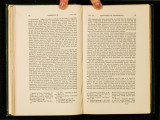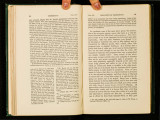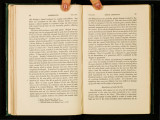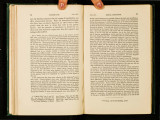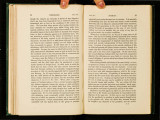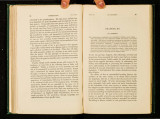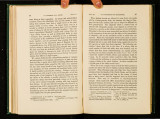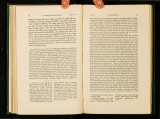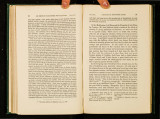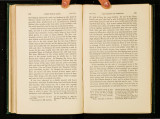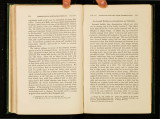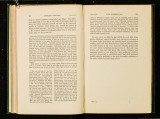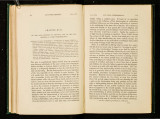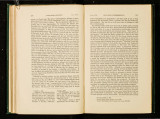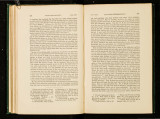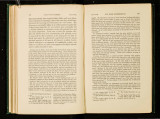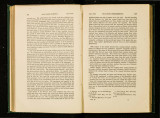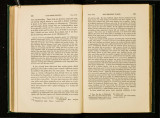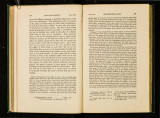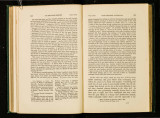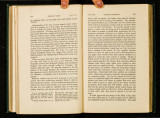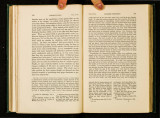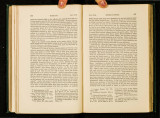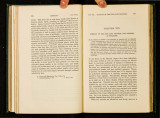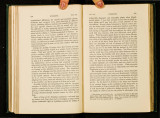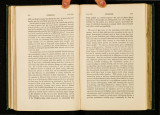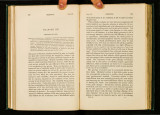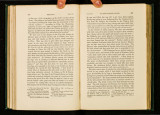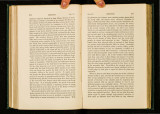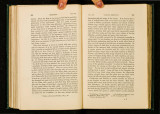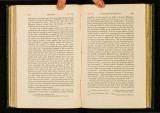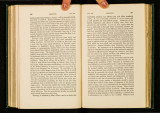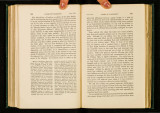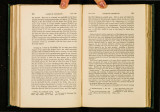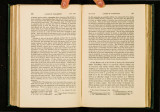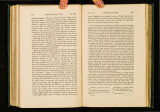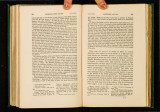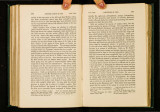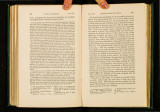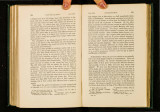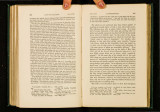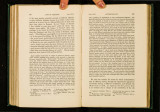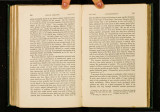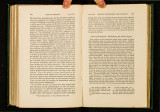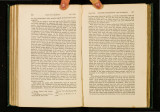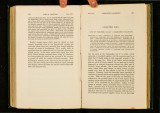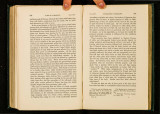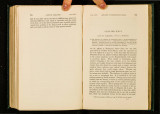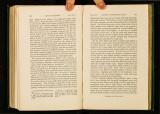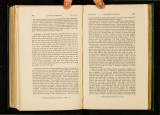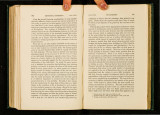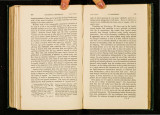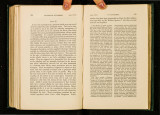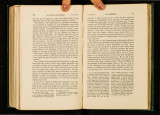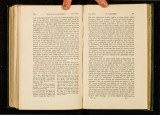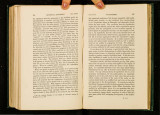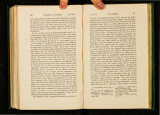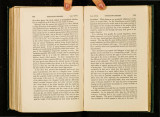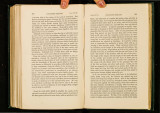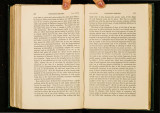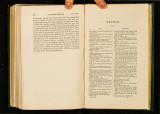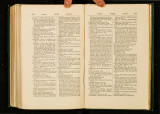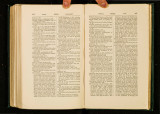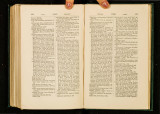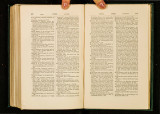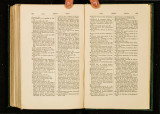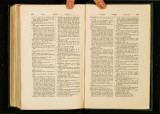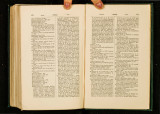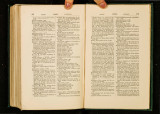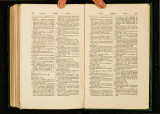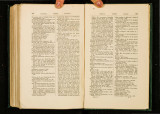| OCR Text |
Show 160 STERILITY FROM CHAP. XVll!. depends more on the constitution of the species than on the nature of the change ; for certain whole groups are affect.ed more than others; but exceptions always occur, for s~me species in the most fertile groups refuse to breed, and some m the most sterile groups breed freely. Those animals which usually breed freely under confinement, rarely breed, as I was ~ssured,. in the Zoological Gardens, within a year or two after tbe:r first Importation. When an animal which is generally sterile under confinement happens to breed, the young apparently do not inherit this power; for bad this been the case, various quadrupeds and birds which are valuable for exhibition, would have become com~on. Dr. Broca even affirms 63 that many animals in the Jardin des Plantes, after having produced young for three or four successive generations, become sterile; but this may be the I'esult of too close interbreeding. It is a remarkable circumstance that many mammals and birds have produced hybrids under confinement quite as read!ly as, or even more readily than, they have procreated their own kind. Of this fact many instances have been given; 64 and we are thus reminded of those plants which when cultivated refuse to be fertilised by their own pollen, but can easily be fertilised by that of a distinct species. Finally, we must conclude, limited as the conclusion is," that changed conditions of life have an especial power of acting injuriously on the reproductive system. The whole case is quite peculiar, for these organs, though not diseased, are thus rendered incapable of performing their proper functions, or perform them imperfectly. Sterility of Domesticated .Animals j1·om changed conditions.-With respect to domesticated animals, as their domestication mainly depends on the accident of their breeding freely under captivity, we ought not to expect that their reproductive system would be affected by any moderate degree of change. Those orders of quadrupeds and birds, of which the wild species breed most readily in our menageries, have afforded us the greatest number of domesticated productions. Savages in most parts of the world are fond of taming animals; 65 and if any of these regularly produced 63 ' Journal de Physiologie,' tom. ii. p. 347. 64 For additional evidence on this subject, see F. Cnvier, in 'Annales du Museum,' tom. xii. p. 119. 6s Numerous instances could be given. Thus Livingstone ('Travels,' p. 217) states that the King of the Barotse, an inland tribe which never had any communication with white men, was CHAP. XVIJI. CHANGED CONDITIONS. 161 young, and were at the same time useful, they would be at once domesticated. If, when their masters migrated into other countries, they were in addition found capable of withstanding various climates, they would be still more valuable; and it appears that the animals which breed readily in captivity can generally withstand different climates. Some few domesticated animals, such as the reindeer and camel, offer an exception to this rule. Many of our domesticated animals can bear with undiminished fertility the most unnatural conditions; for instance, rabbits, guinea-pigs, and ferrets breed in miserably confined hutches. Few European dogs of any kind withstand without degeneration the climate of India; but as long as they survive, they retain, as I hear from Dr. Falconer, their fertility; so it is, according to Dr. Daniell, with English dogs taken to Sierra Leone. The fowl, a native of the hot jungles of India, becomes more fertile than its parent-stock in every quarter of the world, until we advance as far north as Greenland and Northern Siberia, where this bird will not breed. Both fowls and pigeons, which I received during the autumn direct from Sierra Leone, were at once ready to couple.66 I have, alsoJ seen pigeons breeding as freely as the common kinds within a year after their importation from the Upper Nile. The guinea-fowl, an aboriginal of the hot and dry deserts of Africa, whilst living under our damp and cool climate, produces a large supply of eggs. Nevertheless, our domesticated animals under new conditions occasionally show signs of lessened fertility. Roulin asserts that in the hot valleys of the equatorial Cordillera sheep are not fully fecund; 67 and according to Lord Somerville,S8 the merino-sheep which he imported from Spain were not at first perfectly fertile. It is said 69 that mares brought up on dry food in the stable, and turned out to grass, do not at first breed. . The peahen, as we have seen, is said not to lay so many eggs in England as in India. It was long before the canary-bird was fully fertile, and even now first-rate breeding birds are not common.70 In the hot and dry province of Delhi, the eggs of the turkey, as I hear from Dr. Falconer, though placed under a hen, are extremely liable to fail. According to Roulin, geese taken within a recent period to the lofty plateau of Bogota, at first laid seldom, and then only a few eggs; of these scarcely a fourth were hatched, and half the young birds died : in the second generation they were more fertile; and when Roulin wrote they were becoming as extremely fond of taming animals, and every young antelope was brought to him. Mr. Galton informs me that the Da.maras are likewise fond of keeping pets. The Indians of South America follow the same habit. Capt. Wilkes states that the Polynesians of the Samoan Islands tamed pigeons; and the New Zealanders, as Mr. Mantell informs me, kept various kiuds of birds. 86 For analogous cases with the fowl, VOL. II. see Reaumur, 'Art de faire Eclorre,' &c., 1749, p. 243 ; and Col. Sykes, in 'Proc. Zoolog. Soc.,' 1832, &c. With respect to the fowl not breeding in northern regions, see Latham's 'Hi st. of Birds,' vol. viii., 1823, p. 169. 67 'Mem. par divers Sa vans, Acad. des Scienc~s,' tom. vi., 1835, p. 347. 68 Youatt on Sheep, p. 181. 69 J .1\Iills, 'Treatise on Cattle,' 1776, p. 72. 7° Bechstein, 'Stubenvogel,' e. 242. -;\t: |




